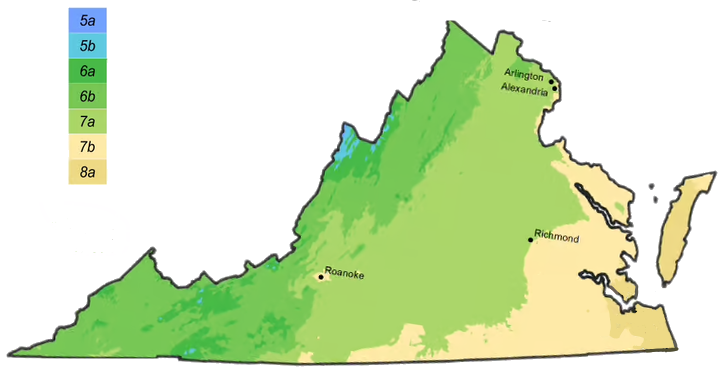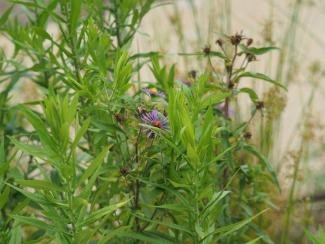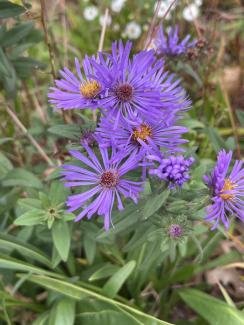Common Name
New england aster
Plant Form
Herbs
Duration
Perennial
Max Height (ft)
6.0
Region
Piedmont
Mountain
Hardiness Zone
5,
6,
7,
8

Additional Info
Showy deep pink-purple flowers are attractive to wildlife including bees and butterflies and also make great cut flowers for arrangements. Tolerates clay soil and makes a great addition to a rain garden. Plants can be cut to the ground after flowering to promote strong new growth. Good air circulation will help prevent foliar diseases.
Wildlife value: Host plant for the Pearl Crescent caterpillars. Flower nectars are attractive to bees, hover flies, new and migrating Monarch butterflies. Songbirds and small mammals eat the seeds. Members of the genus Symphyotrichum support specialized bees. Plant NOVA Natives lists this species as particularly popular with the non-native honeybees
Flower Color
Purple/lavender
Flower Prominence
Conspicuous
Bloom Time
Late Summer
Fall
Bloom Month
August
September
October
Light Requirements
Full sun
Partial sun
Moisture Requirements
Moist
Soil Texture
Clay
High organic matter
Climate-smart plant
Yes
Deer Resitant
Yes
Seed or Fruit eaten by wildlife?
Yes
Pollinators
Bees
Butterfiles
Monarchs
Top 30 for Butterfly and Moth Caterpillars?
Yes
Number of Lepidotera Species Genus Supports
112
Top 30 for Pollen Specialist Bees?
Yes
Number of Pollen Specialist Bees that Rely on this Genus
33
Recommended for
Tolerates
Nurseries that may carry live plant
Additional links

